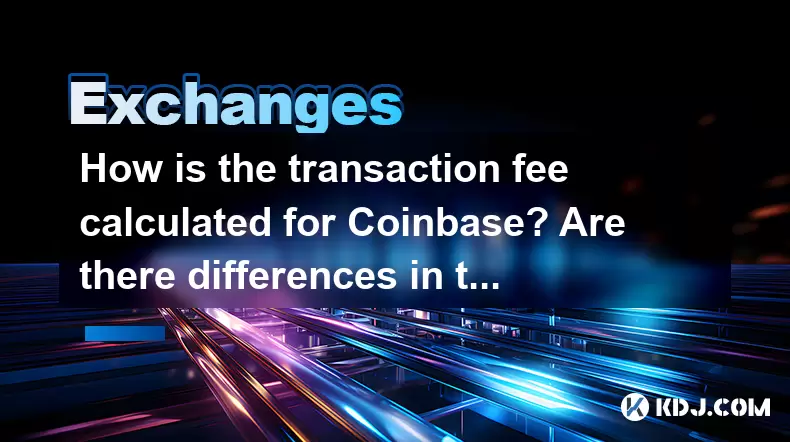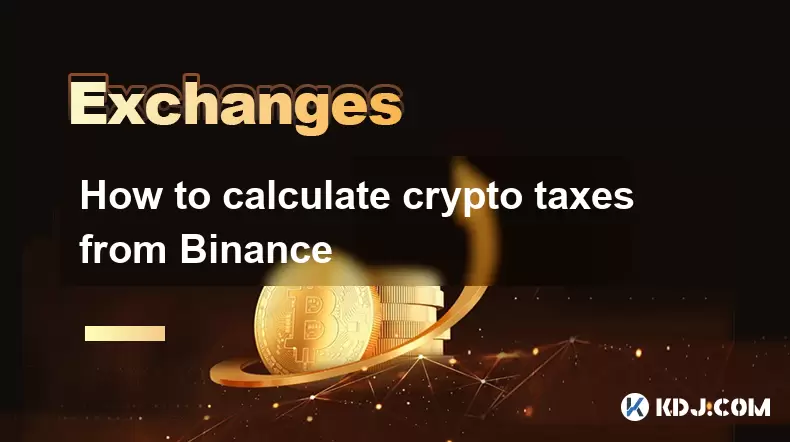-
 Bitcoin
Bitcoin $117500
2.15% -
 Ethereum
Ethereum $3911
6.19% -
 XRP
XRP $3.316
10.79% -
 Tether USDt
Tether USDt $1.000
0.01% -
 BNB
BNB $787.2
2.24% -
 Solana
Solana $175.2
4.15% -
 USDC
USDC $0.9999
0.00% -
 Dogecoin
Dogecoin $0.2225
8.40% -
 TRON
TRON $0.3383
0.28% -
 Cardano
Cardano $0.7868
6.02% -
 Stellar
Stellar $0.4382
9.34% -
 Hyperliquid
Hyperliquid $40.92
7.56% -
 Sui
Sui $3.764
7.63% -
 Chainlink
Chainlink $18.48
10.66% -
 Bitcoin Cash
Bitcoin Cash $582.1
1.88% -
 Hedera
Hedera $0.2601
6.30% -
 Avalanche
Avalanche $23.33
4.94% -
 Ethena USDe
Ethena USDe $1.001
0.02% -
 Litecoin
Litecoin $122.3
2.04% -
 UNUS SED LEO
UNUS SED LEO $8.969
-0.27% -
 Toncoin
Toncoin $3.339
0.86% -
 Shiba Inu
Shiba Inu $0.00001287
4.30% -
 Uniswap
Uniswap $10.43
7.38% -
 Polkadot
Polkadot $3.861
5.08% -
 Dai
Dai $1.000
0.02% -
 Bitget Token
Bitget Token $4.513
3.41% -
 Monero
Monero $267.7
-6.18% -
 Cronos
Cronos $0.1499
4.14% -
 Pepe
Pepe $0.00001110
5.15% -
 Aave
Aave $284.9
8.28%
How is the transaction fee calculated for Coinbase? Are there differences in the rates for different payment methods?
Coinbase's fees vary by transaction type, payment method, and region; using bank transfers and limit orders can help minimize costs.
May 18, 2025 at 03:28 am

Coinbase, one of the leading cryptocurrency exchanges, charges transaction fees that can vary based on several factors, including the type of transaction, the payment method used, and the region from which the transaction is made. Understanding how these fees are calculated and the differences in rates for various payment methods is crucial for users looking to minimize their costs. In this article, we will delve into the specifics of Coinbase's fee structure and explore how different payment methods affect the fees you pay.
Understanding Coinbase's Fee Structure
Coinbase's fee structure is designed to cover the costs of processing transactions and maintaining the platform. The fees are typically broken down into two main categories: trading fees and payment method fees. Trading fees are charged when you buy or sell cryptocurrencies on Coinbase, while payment method fees are applied based on the method you use to deposit or withdraw funds.
Trading Fees on Coinbase
When you trade cryptocurrencies on Coinbase, you are subject to trading fees. These fees can vary depending on the size of your trade and the type of order you place. Coinbase uses a tiered fee structure based on your 30-day trading volume and the type of order (market, limit, or stop).
- Market Orders: These are orders to buy or sell at the current market price. The fees for market orders are typically higher than for limit orders.
- Limit Orders: These allow you to set a specific price at which you want to buy or sell. The fees for limit orders are generally lower than for market orders.
- Stop Orders: These are orders that become active only when the market price reaches a specified level. The fees for stop orders are similar to those for market orders.
The exact fee percentage can be found on Coinbase's fee page, which is updated regularly. As of the latest information, fees range from 0.50% to 0.05% for market takers and from 0.50% to 0% for market makers, depending on your trading volume.
Payment Method Fees
Coinbase offers various payment methods for depositing and withdrawing funds, and each method comes with its own set of fees. These fees are in addition to any trading fees you may incur. Here's a breakdown of the common payment methods and their associated fees:
- Bank Transfer (ACH): This is typically the cheapest method for depositing funds into your Coinbase account. The fee for ACH deposits is usually free, but there may be a small fee for withdrawals, depending on your bank.
- Credit/Debit Card: Using a credit or debit card to deposit funds into your Coinbase account is convenient but comes with higher fees. The fee for card deposits can range from 3.99% to 4.99% of the transaction amount.
- PayPal: If you use PayPal to deposit or withdraw funds, you will be charged a fee. The fee for PayPal deposits and withdrawals can range from 2.50% to 3.99%, depending on the transaction amount and your region.
- Wire Transfer: Wire transfers are another option for depositing and withdrawing funds. The fee for wire transfers can vary significantly, with deposits typically ranging from $10 to $25 and withdrawals ranging from $25 to $30.
Regional Differences in Fees
It's important to note that Coinbase's fees can vary based on your geographic location. Different regions may have different fee structures, so it's essential to check the specific fees applicable to your region on Coinbase's website. For example, users in the United States may have different fee structures compared to users in Europe or Asia.
How to Minimize Your Fees on Coinbase
While Coinbase's fees are a part of using the platform, there are several strategies you can use to minimize your costs:
- Use Bank Transfers: Whenever possible, use bank transfers (ACH) for depositing and withdrawing funds, as they typically have the lowest fees.
- Increase Your Trading Volume: By increasing your 30-day trading volume, you can move to a higher tier in Coinbase's fee structure, which can result in lower trading fees.
- Use Limit Orders: When trading, consider using limit orders instead of market orders to potentially save on fees.
- Monitor Fees Regularly: Coinbase's fee structure can change, so it's a good idea to check the fees regularly to ensure you're aware of any updates.
Step-by-Step Guide to Checking Fees on Coinbase
To ensure you're always aware of the fees you're paying, it's helpful to know how to check them on Coinbase. Here's a detailed step-by-step guide:
- Log into Your Coinbase Account: Start by logging into your Coinbase account using your credentials.
- Navigate to the Fees Page: Once logged in, navigate to the "Fees" section, which can usually be found in the footer of the Coinbase website or in the settings menu of the mobile app.
- Review the Fee Structure: On the fees page, you'll find a detailed breakdown of the fees for trading and payment methods. Take note of the fees applicable to your region and the payment methods you use.
- Check Your Transaction History: To see the fees you've been charged on past transactions, go to your transaction history. Here, you can review each transaction and see the associated fees.
- Adjust Your Payment Methods: Based on the fee information, you may want to adjust your preferred payment methods to minimize costs. For example, switching from card payments to bank transfers can save you money.
Frequently Asked Questions
Q: Can I negotiate fees with Coinbase?
A: Coinbase's fee structure is standardized and generally non-negotiable. However, you can minimize your fees by using the strategies mentioned earlier, such as choosing the right payment method and increasing your trading volume.
Q: Are there any hidden fees on Coinbase?
A: Coinbase is transparent about its fees, and all applicable fees are listed on their website. However, it's essential to review the fees for each transaction type and payment method to ensure you're aware of all costs.
Q: Do Coinbase fees change frequently?
A: Coinbase's fees can change, but the platform typically provides advance notice of any fee adjustments. It's a good practice to check the fees page regularly to stay informed about any changes.
Q: Can I use multiple payment methods to reduce fees?
A: Yes, you can use multiple payment methods on Coinbase. For example, you might use a bank transfer for deposits to minimize fees and a credit card for smaller, more urgent transactions where the convenience justifies the higher fee.
Disclaimer:info@kdj.com
The information provided is not trading advice. kdj.com does not assume any responsibility for any investments made based on the information provided in this article. Cryptocurrencies are highly volatile and it is highly recommended that you invest with caution after thorough research!
If you believe that the content used on this website infringes your copyright, please contact us immediately (info@kdj.com) and we will delete it promptly.
- Ethereum, Staking Yields, and DeFi Exposure: A New Era for Investors?
- 2025-08-08 15:10:12
- Unilabs Pumps MIA, Binance Coin Bouncing Back, and Ethereum's Bearish Blues
- 2025-08-08 15:10:12
- Ethereum's Wyckoff Markup and Market Rotation: A New Era?
- 2025-08-08 15:30:12
- Ethereum, Vitalik Buterin, and the Overleveraged Game: A Balancing Act
- 2025-08-08 15:30:12
- Ethereum, Corporate Treasuries, and Vitalik Buterin: A New Era for ETH?
- 2025-08-08 15:36:08
- BNB Price, Binance Staking, and SEC Concerns: What's the Deal?
- 2025-08-08 15:36:08
Related knowledge

How to use margin trading on Poloniex
Aug 08,2025 at 09:50am
Understanding Margin Trading on Poloniex

How to use advanced trading on Gemini
Aug 08,2025 at 04:07am
Understanding Advanced Trading on GeminiAdvanced trading on Gemini refers to a suite of tools and order types designed for experienced traders who wan...

How to deposit USD on Bitstamp
Aug 07,2025 at 05:18pm
Understanding Bitstamp and USD DepositsBitstamp is one of the longest-standing cryptocurrency exchanges in the industry, offering users the ability to...

How to use the Kraken Pro interface
Aug 08,2025 at 09:57am
Understanding the Kraken Pro Interface LayoutThe Kraken Pro interface is designed for both novice and experienced traders seeking a streamlined experi...

How to find my transaction ID on Gemini
Aug 08,2025 at 12:50am
Understanding the Transaction ID in Cryptocurrency ExchangesA transaction ID (TXID) is a unique alphanumeric string that identifies a specific transfe...

How to calculate crypto taxes from Binance
Aug 08,2025 at 07:56am
Understanding Cryptocurrency Taxation on BinanceCalculating crypto taxes from Binance requires a clear understanding of how tax authorities classify d...

How to use margin trading on Poloniex
Aug 08,2025 at 09:50am
Understanding Margin Trading on Poloniex

How to use advanced trading on Gemini
Aug 08,2025 at 04:07am
Understanding Advanced Trading on GeminiAdvanced trading on Gemini refers to a suite of tools and order types designed for experienced traders who wan...

How to deposit USD on Bitstamp
Aug 07,2025 at 05:18pm
Understanding Bitstamp and USD DepositsBitstamp is one of the longest-standing cryptocurrency exchanges in the industry, offering users the ability to...

How to use the Kraken Pro interface
Aug 08,2025 at 09:57am
Understanding the Kraken Pro Interface LayoutThe Kraken Pro interface is designed for both novice and experienced traders seeking a streamlined experi...

How to find my transaction ID on Gemini
Aug 08,2025 at 12:50am
Understanding the Transaction ID in Cryptocurrency ExchangesA transaction ID (TXID) is a unique alphanumeric string that identifies a specific transfe...

How to calculate crypto taxes from Binance
Aug 08,2025 at 07:56am
Understanding Cryptocurrency Taxation on BinanceCalculating crypto taxes from Binance requires a clear understanding of how tax authorities classify d...
See all articles

























































































